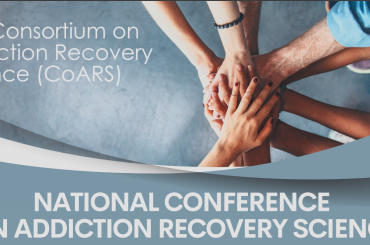One of the biggest changes brought on by the COVID-19 pandemic is the shift in the way people work.
What was once a 9-to-5 office job with a hefty commute by car or public transportation has often turned into working at home, only interacting with colleagues via video chat and instant messaging, and greater amounts of free time thanks to only having to travel a few flights of stairs to a desk.
As more companies ask their employees back to the office or create hybrid schedules, it’s important for employers to understand that the people they’re telling to return might be in a considerably different place than they were when they left.
The substance abuse toll of the pandemic
According to the Centers for Disease Control and Prevention (CDC), as of June 2020, 13% of Americans reported starting or increasing substance use as a way to cope with stress or emotions related to COVID-19. A Harris Poll survey conducted in spring 2021 found that nearly 1 in 5 Americans reported “heavy drinking” — defined as having had at least two days in the previous 30 of consuming more than four drinks for women and five for men — over the past 30 days.
Combine that with the fact that nearly 90% of individuals who have a substance use disorder are not in treatment, and there’s the potential for a crisis.
Many of these studies, including one conducted by the University of Arizona, found that greater alcohol consumption was most associated with job loss. But for those whose jobs remain and who may be returning to the workplace in some capacity, what can they expect to be walking into?
How to handle addiction in the workplace
Stigma is one of the biggest factors that keeps people who may be living with an addiction to alcohol or other drugs from seeking treatment. In the workplace, there are plenty of reasons for a person to keep their struggles with substance use hidden: potential firing or lack of advancement opportunities, to name a couple.
Stigma isn’t going to go away anytime soon, so it’s important for employers to develop protocols for how they can help an employee who may be struggling with an addiction. A 2019 Emerging Trends survey by Willis Towers Watson revealed that only 22% of employers had a plan to address opioid use, and only 23% were considering initiatives to prevent the use of opioids.
The point should be to advertise that help is available, rather than let workers suffer in silence.
We must train our leaders and human resources departments to understand the warning signs that someone may have a problem with alcohol or other drugs. To drive home the point that it’s OK to seek help and that there is no stigma with reaching out, it’s imperative to leverage resources from sources like the National Institutes of Health and the Partnership to End Addiction.
Other steps managers and leaders can take include:
- Have an open dialogue with staff. Broad education courses can help reduce stigma. Employee assistance programs (EAPs) can provide workers with resources and referrals to behavioral health professionals so that everyone is aware that help is available and easy to access.
- Conduct internal training for leaders. Managers should participate in annual training on topics like EAPs, substance use disorders, and mental health.
- Establish a clear set of resources. EAPs and self-help, peer-based programs are good starting points. Bring in speakers who are subject matter experts or offer webinars to provide education on the dangers of addiction.
Making change to move forward
All these resources are beneficial, and a commitment from the top down at companies to reduce stigma and offer support are major steps in the right direction.
But aside from adapting to what has changed during the pandemic, it’s important to revisit old norms. As workers return to the office, managers may be keen to make up for lost time by scheduling team-building or networking activities to tighten bonds that may have been frayed.
Many of these outings center on alcohol consumption. They don’t have to. Attending a sporting event, seeing a show, playing miniature golf, or doing a ropes course — among many other activities — can all happen without including alcohol in the equation.
Fostering a workplace culture that shows that it’s easy to have fun without drinking can help build camaraderie in more natural ways — and it can ensure that anyone who has a history of substance misuse won’t have to feel isolated or ashamed.
About Bayside Marin
Bayside Marin is a nationally respected provider of personalized residential and outpatient services for adults age 18 and older of all genders who have developed substance use disorders and certain co-occurring mental health concerns. With multiple luxurious residences in the hills overlooking San Rafael, California, Bayside Marin is uniquely prepared to offer world-class care and comprehensive support within a discreet, private, and comfortable environment. For more information, please visit www.baysidemarin.com.








1 Comment
ITR is a wonderful way to experience an AA meeting. AA meetings are attended by alcoholics from around the world. That’s really cool. Personally, I’ve attended in person meetings from a variety of local venues for a decade, and an ITR meeting is even better. You can attend a meeting via cellphone, laptop, or by PC, so you can literally be anywhere, One hour meetings occur 365 days a year at roughly every 2 hour intervals during USA’s EST. You will be able to easily find a sponsor with thousands of people to choose from. Records of attendance are gathered in your personal file, and can be easily used for legal purposes. You simply cannot do better than an ITR meeting. Attend just one meeting and you’ll quickly find yourself coming back for more.